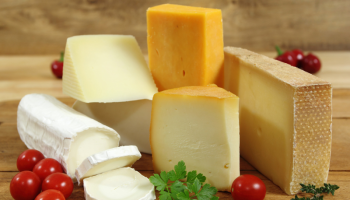The relationship between Texas and Mexican food is a story of history, heritage, and flavor. Deeply rooted in both cultures, Mexican food in Texas has evolved into something uniquely its own while remaining faithful to its traditional roots. Across the Lone Star State, the aroma of sizzling fajitas, fresh tortillas, and simmering sauces fills the air, reflecting a culinary tradition that celebrates community, creativity, and connection. Mexican food in Texas is more than just a cuisine—it is a cultural bond that continues to shape the state’s identity.
The Historical Roots of Mexican Food in Texas
The story of Mexican food in Texas begins long before the modern border existed. The region once belonged to Mexico, and even earlier, it was home to indigenous peoples whose agricultural practices and food traditions shaped what would later become Tex-Mex cuisine. Staples such as corn, beans, and chili peppers formed the foundation of many dishes still enjoyed today.
When Spanish settlers arrived in the 16th century, they brought new ingredients like beef, pork, cheese, and wheat, introducing cooking techniques that blended seamlessly with native traditions. This combination of Old World and New World influences gave birth to a cuisine that would later define the region.
After Texas gained independence and later became part of the United States, Mexican communities remained deeply influential. Their recipes, family gatherings, and culinary customs continued to thrive, passed down through generations. Over time, as Mexican and Texan cultures intertwined, new dishes emerged—blending flavors, spices, and cooking methods in innovative ways.
Tex-Mex cuisine, a product of this fusion, eventually became a defining symbol of the state’s food culture. While authentic Mexican food in Texas stays true to its origins, Tex-Mex reflects the blending of local ingredients and American influence. Dishes like enchiladas covered in cheese, crispy tacos, and chili con carne exemplify this flavorful evolution. Yet, at its core, the essence of Mexican food remains—rich, soulful, and deeply connected to tradition.
Today, the history of Mexican food in Texas can be traced not only through restaurants and recipes but also through communities that have preserved their cultural heritage. From small taquerias in San Antonio to vibrant markets in Houston and family-run restaurants in El Paso, every dish tells a story of resilience and pride.
The Modern Evolution of Mexican Food in Texas
While the roots of Mexican food in Texas are firmly planted in tradition, its modern expression is dynamic and diverse. As the state’s culinary scene has grown, chefs and home cooks alike have embraced innovation while honoring authenticity. The result is a vibrant mix of traditional recipes and contemporary twists that continue to define what Mexican food in Texas means today.
In cities like Austin, Dallas, and Houston, restaurants celebrate Mexican cuisine with creativity and respect for its origins. You’ll find everything from street-style tacos topped with fresh cilantro and onions to refined dishes inspired by regional Mexican flavors. Chefs source local ingredients, experiment with seasonal produce, and incorporate global influences without losing sight of the culture that inspired their menus.
What sets Mexican food in Texas apart is its ability to evolve without losing its soul. While Tex-Mex remains beloved for its hearty, comfort-driven appeal, authentic Mexican cuisine has gained renewed attention. Diners now seek out dishes like mole poblano, cochinita pibil, and birria—recipes that showcase depth, tradition, and regional character.
This evolution also reflects the changing demographics of Texas. As more people from across Mexico have settled in the state, they’ve brought their regional specialties with them. From the coastal seafood dishes of Veracruz to the smoky flavors of Oaxaca and the vibrant spices of Jalisco, Texas has become a mosaic of Mexican culinary diversity.
Food festivals, pop-up events, and cultural celebrations highlight this ongoing exchange. The combination of innovation and respect for heritage keeps the cuisine fresh, relevant, and deeply meaningful. Mexican food in Texas continues to grow not just as a category of dining but as a living reflection of the people who make and enjoy it.
Beyond restaurants, the influence of Mexican food can be felt in everyday Texas life. From family barbecues to holiday feasts, dishes like tamales, rice, beans, and salsa are staples on tables across the state. They represent more than sustenance—they’re a shared language of comfort and connection, passed through generations with love and care.
The Cultural Impact of Mexican Food Across Texas
Mexican food in Texas has never been just about taste—it’s about culture, identity, and togetherness. Every meal tells a story of migration, adaptation, and celebration. Food serves as a bridge between communities, reminding people of their heritage while welcoming new traditions.
In towns like San Antonio, where Mexican and Texan cultures have been intertwined for centuries, food festivals and local eateries honor this shared history. The city’s markets, like the iconic Mercado, are filled with colors, sounds, and flavors that capture the spirit of Mexican culture. From handmade tortillas to freshly grilled elote, the experience of Mexican food here is immersive and authentic.
Mexican food has also shaped how Texans think about dining. The concept of casual, communal eating—sharing tacos around a table, dipping chips into salsa, and savoring slow-cooked meats—reflects a social tradition that values connection. These gatherings transcend background or language, bringing people together over a shared love for flavor.
Cultural celebrations such as Cinco de Mayo, Día de los Muertos, and Fiesta San Antonio showcase how food plays a central role in preserving heritage. Tamales, pozole, pan dulce, and horchata are more than menu items—they’re symbols of unity, history, and pride. These traditions highlight how Mexican food continues to influence not just the palate but the very fabric of Texan identity.
Today, Mexican food in Texas stands as a symbol of inclusivity and evolution. It bridges generations, telling stories of family, resilience, and creativity. Whether served in a fine dining restaurant, a neighborhood taco truck, or a home kitchen, the essence of this cuisine remains consistent—rich, flavorful, and rooted in love.
The Future of Mexican Food in Texas
As Texas continues to grow and diversify, so too does its culinary landscape. The future of Mexican food in Texas looks bright, filled with endless possibilities for innovation while preserving the authenticity that defines it. Younger generations of chefs and restaurateurs are embracing their cultural heritage, reimagining traditional dishes, and introducing them to new audiences.
Technology and social media have also played a role in expanding appreciation for Mexican cuisine. Recipes, cooking tutorials, and restaurant recommendations are shared across platforms, connecting people who want to experience genuine flavors. This growing interest has helped elevate Mexican food beyond its regional roots, giving it national and even global recognition.
Sustainability and local sourcing are also shaping the next chapter of Mexican food in Texas. Chefs are focusing on fresh, locally grown ingredients and traditional preparation methods, blending environmental consciousness with culinary artistry. This movement reflects a deep respect for the land and culture that have always defined the cuisine.
At its heart, Mexican food in Texas remains what it has always been—a celebration of culture, flavor, and community. It’s a cuisine that tells the story of a shared past and an evolving future, where every bite honors heritage and every meal brings people together.
From small family kitchens to bustling city restaurants, Mexican food continues to define what it means to live and eat in Texas. It’s a story written not only in recipes but in memories, traditions, and the enduring connection between culture and cuisine.







